calsfoundation@cals.org
Jacksonport (Jackson County)
| Latitude and Longitude: | 35º38’30″N 091º18’34″W |
| Elevation: | 226 feet |
| Area: | 0.38 square miles (2020 Census) |
| Population: | 150 (2020 Census) |
| Incorporation Date: | December 17, 1852 |
Historical Population as per the U.S. Census:
|
1810 |
1820 |
1830 |
1840 |
1850 |
1860 |
1870 |
1880 |
1890 |
1900 |
|
– |
– |
– |
– |
– |
– |
769 |
656 |
421 |
265 |
|
1910 |
1920 |
1930 |
1940 |
1950 |
1960 |
1970 |
1980 |
1990 |
2000 |
|
373 |
– |
196 |
215 |
– |
– |
306 |
288 |
264 |
235 |
|
2010 |
2020 |
|
|
|
|
|
|
|
|
|
212 |
150 |
|
|
|
|
|
|
|
|
Jacksonport is a town in central Jackson County, located about one-half mile from the confluence of the Black and White rivers and three miles northwest of the county seat of Newport (Jackson County). Its location at the convergence of two navigable waterways enabled Jacksonport to thrive in a time when river transport was the most reliable method of transportation in Arkansas. Its twenty-first-century circumstance as a remote community on the White River belies the true history of Jacksonport; in the mid-nineteenth century, much of the trade throughout northern Arkansas and southern Missouri was facilitated via this once-bustling river town. Its importance as a trade center began to diminish when Jacksonport was bypassed by a railroad built through Jackson County in 1872.
Native Americans lived in the area for millennia before white settlers arrived in the nineteenth century. Jacksonport was located along part of what came to be called the Old Southwest Trail, which diagonally traversed the state from northeast to southwest into Texas, but until the post-bellum construction of railroads, reliable commercial and migrant mobility was dependent upon riverboats. Native Americans and French hunters utilized the rivers near Jacksonport because the hilly terrain, perennial threats from floods, and thick woodlands could make land travel across Arkansas a grueling experience. The abundance of game and thick forests at the time attracted fur trappers, but few settlers had yet arrived in this part of territorial Arkansas, so the land was wild and sparsely populated when Jackson County was established in 1829.
In 1831, riverboat pilot Thomas Tunstall scouted the area and realized its potential when his steamboat, bound for Batesville (Independence County), was delayed a few days at the Black and White rivers’ confluence due to low water. Tunstall returned the following year and purchased a mill and its surrounding property at Jacks Creek, just upstream from what became Jacksonport. Though Tunstall settled in nearby Newark (Independence County) and never lived in Jacksonport, he is credited as the town’s founder because he opened the first store in the region and likely drafted the first plat of Jacksonport in 1833. The town prospered and emerged as a commercial hub due to the reliable year-round depth of the White River at Jacksonport, which was occasionally problematic in places farther upstream along the Black and White rivers. Steamers bound from Memphis, Tennessee; New Orleans, Louisiana; St. Louis, Missouri; and other markets would offload their goods at Jacksonport for transport via road or onto smaller craft for markets farther upriver.
Jacksonport formally incorporated in 1852 and was established as the Jackson County seat the following year. There are no surviving census figures for Jacksonport before 1870, but at its peak, Jacksonport was estimated to have between 800 and 1,200 in population, though a population of less than 1,000 seems most likely. Principal businesses were built along Jefferson Street, which ran parallel to the riverfront and followed roughly the same route as the levee and the road through Jacksonport State Park do today. Inundations from the river were common, so town sidewalks were made of wooden planks to compensate for the muddy, sodden ground. The Jacksonport social scene also revolved around the river; the arrival of boats (especially steamboats) was cause for excitement for town residents, as they typically threw parties in honor of the captain and crew, and sometimes vice versa.
Growth and commercial trade were halted by Arkansas secession and the beginning of the Civil War. The Third Arkansas was organized at Jacksonport in 1861. Throughout the war, Jacksonport became a strategic objective for both sides, as the transport of supplies was heavily dependent upon control of local rivers. In contrast to more pro-Unionist areas in the hills to the north, Jacksonport was overwhelmingly sympathetic to the secessionist cause, much to the repugnance of occupying Union soldiers. Jacksonport was shelled on June 2, 1862. Other military events at and around the town took place on June 12, 1862, November 21, 1863, April 20, 1864, and April 24, 1864. Permanent, secure control of Jacksonport was elusive for both Union and Confederate forces, even after the successful Union occupation of Little Rock (Pulaski County) in September 1863, as Rebel raiding campaigns harassed Federal forces in northern Arkansas until the end of the war. More than 6,000 Confederate soldiers commanded by General M. Jeff Thompson formally surrendered at Jacksonport on June 5, 1865.
As early as the 1850s, the necessity of building railroads through Arkansas was realized, and, in 1853, the Cairo and Fulton Railroad Company received a federal land grant to build a railroad across Arkansas, roughly following the same route as the Old Southwest Trail. The proposed route from Cairo, Illinois, would enter Arkansas at Pocahontas (Randolph County), proceed southwest through Jacksonport, and go on to the Red River near Fulton (Hempstead County). This project was burdened with financial and political difficulties that hampered progress before the Civil War halted construction altogether. Following the war, construction was resumed by the Iron Mountain, St. Louis and Southern Railroad. When the railroad company petitioned Jacksonport for a land grant and a $25,000 bonus to extend its tracks through town, Jacksonport officials voted against the bonus. In 1872, the railroad subsequently bypassed Jacksonport and built its tracks three miles downriver at a river landing named Newport; a community quickly coalesced around the depot built there, and Newport formally incorporated in 1875.
Businesses and residents began drifting away from Jacksonport for the upstart Newport. Newport marginally edged out Jacksonport in population by 1880, but the growth momentum was thereafter permanently in Newport’s favor. In October 1880, two men named Rowland and Dickerson were taken from the jail and Jacksonport and lynched. Henry Allen was lynched in Jacksonport on September 10, 1881, three days after he stabbed a man in nearby Newport. In 1882, construction of a narrow gauge railway began in an effort to stem the loss of business; the railway ran from Jacksonport to Brinkley (Monroe County) via Newport, and was utilized by lumber businesses for a few decades. In February 1882, a devastating flood and a fire that consumed most of the town—both within the span of one week—further accelerated the depopulation of Jacksonport. A white man named Leonard Boyd was lynched in Jacksonport on August 2, 1887. Hotly contested elections to move the county government to Newport first arose when Jacksonport was surpassed in population in the 1880s. Jacksonport rallied and won the first two elections and managed to postpone removal of the county seat until 1891, when Newport won a third election.
By 1900, the population of Jacksonport had dwindled to 265, and the schools at Jacksonport were consolidated with Newport in 1944. Apart from a levee built in 1909, there were few infrastructure improvements at Jacksonport until the old courthouse was saved from demolition in 1962, when the Jackson County Historical Society purchased the derelict building and the adjacent lands. The old courthouse was renovated to its former grandeur and became part of the Jacksonport State Park in 1965. The courthouse at the park today features a museum of local history and a restored courtroom, replicated to appear as it did during its time as the seat of county government in the 1870s.
During the tornado outbreak of March 1, 1997, a tornado killed a person in Jacksonport, bringing the total to three deaths in Jackson County.
Twenty-first-century Jacksonport is a quiet community distinguished by its state park, some small businesses, and a few churches. The state park is also the locale of the Portfest “Rollin’ on the River” Festival, which draws thousands of visitors each summer.
For additional information:
Reames, Clark. “History of Jacksonport.” Stream of History 21 (September 1984): 18–22.
Shea, William L. “A Semi-Savage State: The Image of Arkansas in the Civil War.” Arkansas Historical Quarterly 48 (Winter 1989): 320–323.
Thompson, George H. Arkansas & Reconstruction. Port Washington, NY: Kennikat Press, 1976.
Watson, Lady Elizabeth. Fight and Survive! A History of Jackson County, Arkansas in the Civil War. Conway, AR: River Road Press, 1974.
West, Mabel. “Jacksonport, Arkansas; Its Rise and Decline.” Arkansas Historical Quarterly 9 (Winter 1950): 231–258.
Adam Miller
Searcy, Arkansas
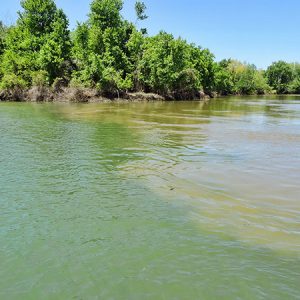 Black and White Confluence
Black and White Confluence 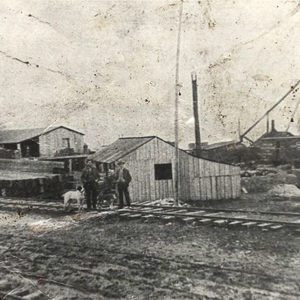 Gibson's Factory
Gibson's Factory  Jackson County Courthouse
Jackson County Courthouse 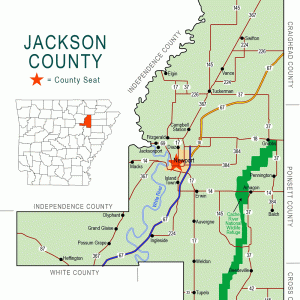 Jackson County Map
Jackson County Map 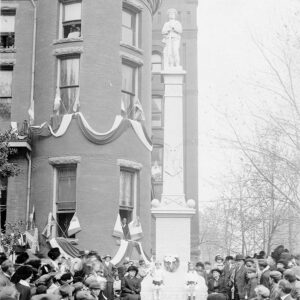 Jackson Guards Memorial
Jackson Guards Memorial 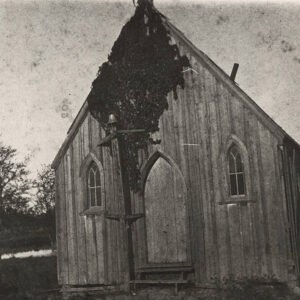 Jacksonport Church
Jacksonport Church 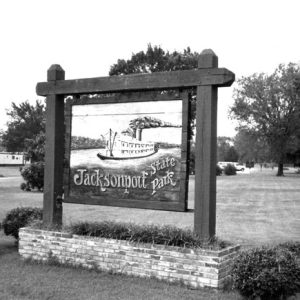 Jacksonport State Park
Jacksonport State Park  Jacksonport State Park
Jacksonport State Park 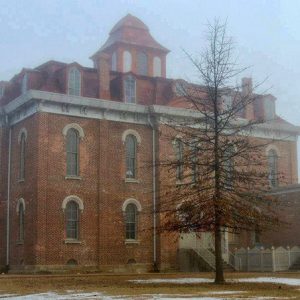 Jacksonport State Park Museum
Jacksonport State Park Museum  Jacksonport Visitors Center
Jacksonport Visitors Center 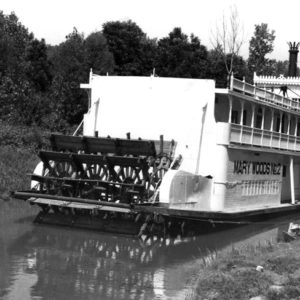 Mary Woods No. 2 Steamboat
Mary Woods No. 2 Steamboat 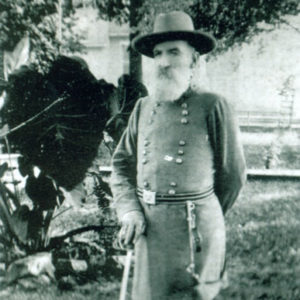 Robert Shaver
Robert Shaver 




Comments
No comments on this entry yet.